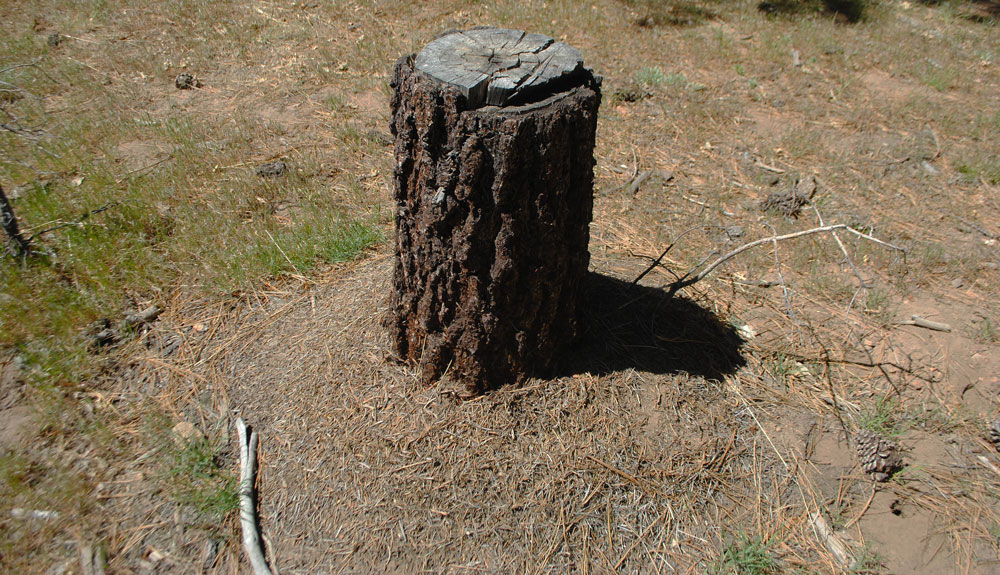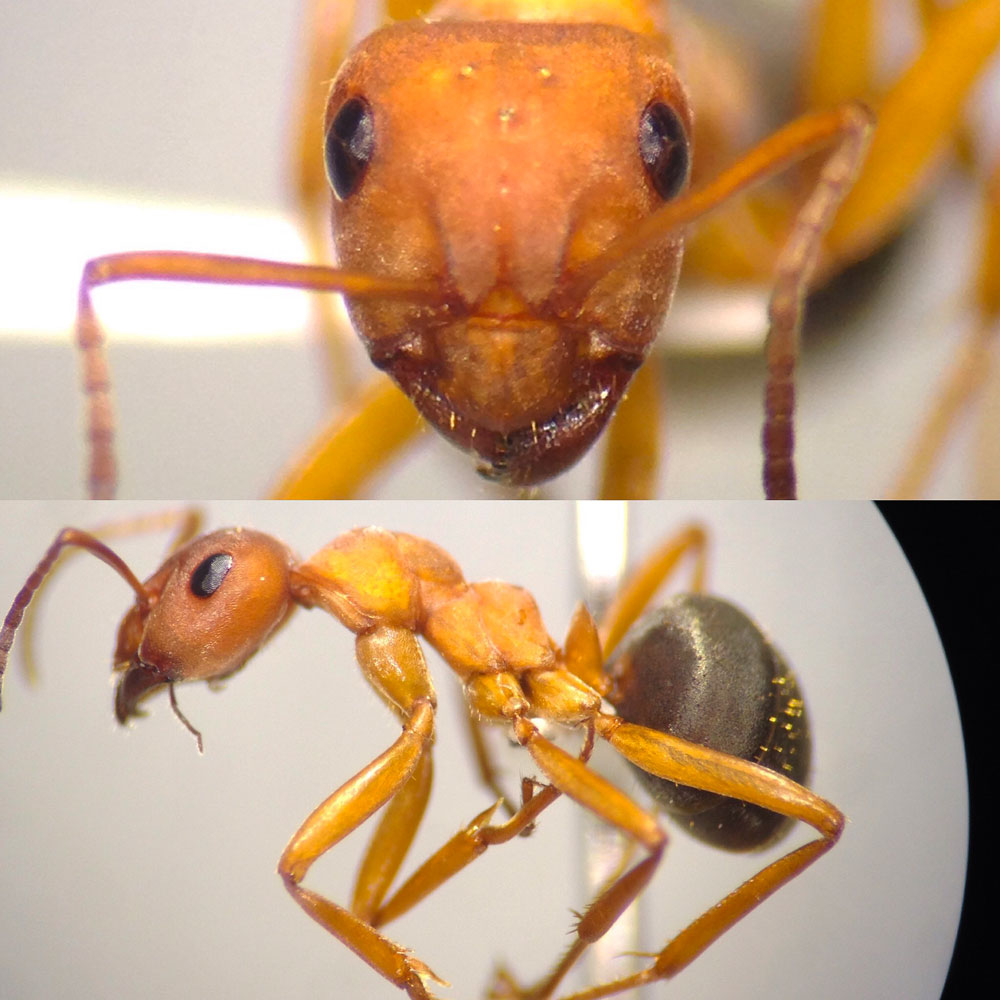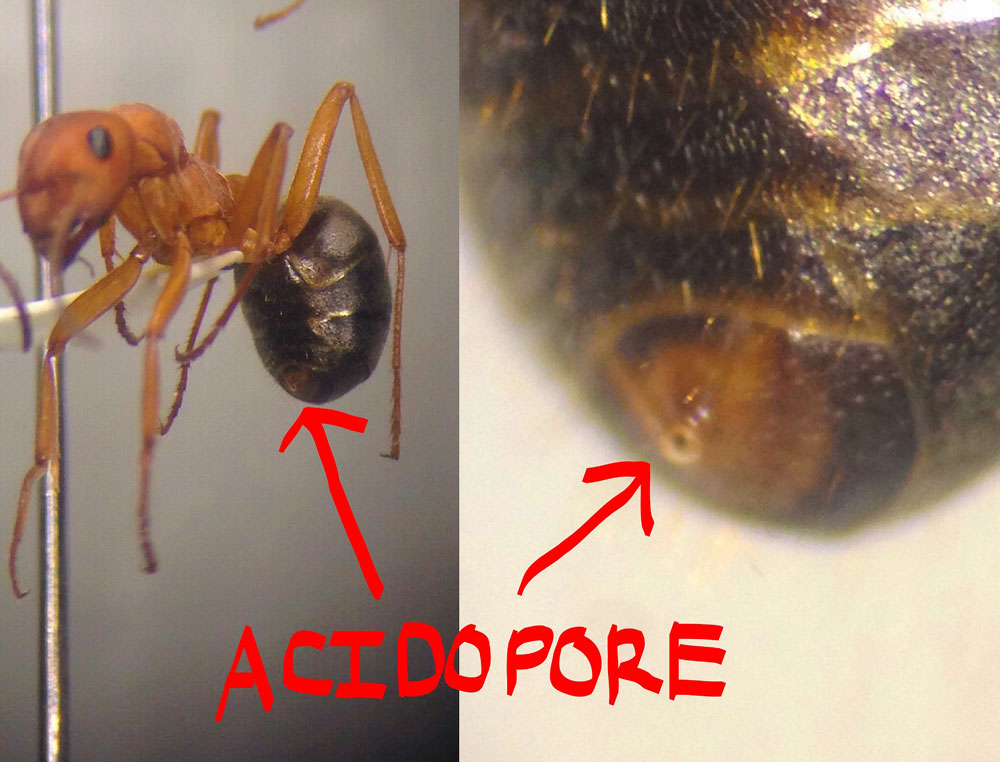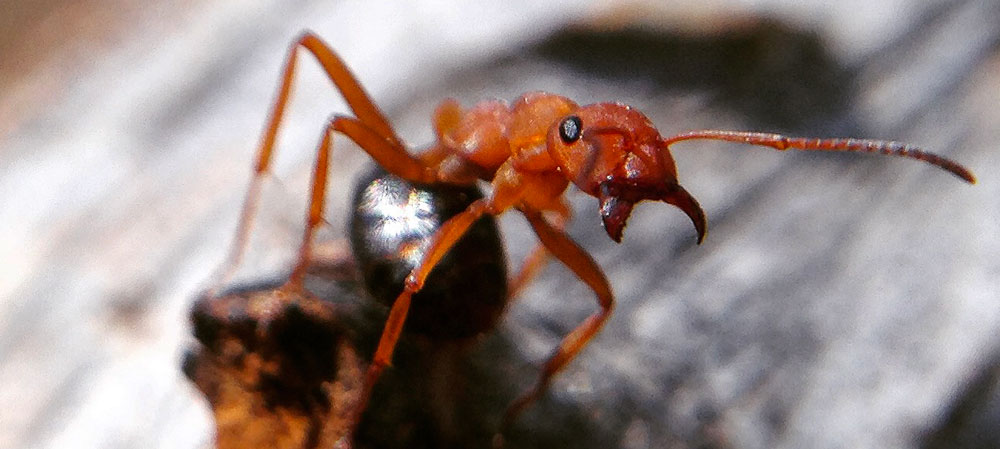What is that mound thing?
 When sauntering about in the San Bernardino National Forest you may notice large mounds or domes made of grass, leaves, pine needles, and numerous other plant materials. What exactly are these strange structures? Believe it not, these somewhat odd structures were built by ants and serves as their comfy home! Yes, those little critters that raid your kitchen during hot summer days in search for your cookie crumbs unfortunately dropped on the counter. Let’s learn a little bit about the ants that build these mounds…after all, knowledge is appreciation.
When sauntering about in the San Bernardino National Forest you may notice large mounds or domes made of grass, leaves, pine needles, and numerous other plant materials. What exactly are these strange structures? Believe it not, these somewhat odd structures were built by ants and serves as their comfy home! Yes, those little critters that raid your kitchen during hot summer days in search for your cookie crumbs unfortunately dropped on the counter. Let’s learn a little bit about the ants that build these mounds…after all, knowledge is appreciation.
The Thatch-Mound Nest
The most striking characteristic of these mound-building ants is of course their…MOUND! The proper term for this mound is a “thatch mound.” Thatch is basically a cover or roof made from pieces of plant material. The ants gather bits of pine needles and other plant materials to assemble their cozy cottage-like domes hence their name “thatch-mound ants.” Their scientific name is Formica ravida in case you were wondering.
 Why do they build thatch mounds? Sounds like a lot of work. Well, these ants often live up high in the mountains where they face challenging weather conditions such as summer heat, high winds, and the winter rain and snow. The mounds that these ants construct is an adaptation, a characteristic that aids in the colony’s survival, by providing a structure that retains heat, maintains a necessary level of humidity for larval growth, resists percolation of rain, facilitates snow compaction for insulation, and resists wind.
Why do they build thatch mounds? Sounds like a lot of work. Well, these ants often live up high in the mountains where they face challenging weather conditions such as summer heat, high winds, and the winter rain and snow. The mounds that these ants construct is an adaptation, a characteristic that aids in the colony’s survival, by providing a structure that retains heat, maintains a necessary level of humidity for larval growth, resists percolation of rain, facilitates snow compaction for insulation, and resists wind.
To add to the external structure, the mounds can be as high as two to three feet in height which aids in heating up the ants inside by increasing the surface area of nest exposed to sunlight 1. This allows the ants inside to get warm which allows them to forage before other ants! Talk about a useful home!

Now Let Us Peek Inside The Thatch Mound
BEWARE! They are fierce and aggressive!
I will discuss their defense in an upcoming paragraph. Inside these conspicuous mounds are tunnels and chambers that can be scattered throughout as well as a goodly distance underground 2. The tunnels serve much like streets and roadways in our cities where the ants can access the various rooms or chambers. Each room or chamber can serve a specific purpose. For example, chambers can serve as brood chambers where the “ant babies” get their nourishment and care. They can also serve as a place to store trash. Yes, they have “dumps” much like humans do. Ants are very hygienic organisms 3.
Those mounds sound like a wonderful place to spend a winter season!
Yes! Many different types of organisms can be found in these nests throughout the year, especially during the harsh winter season where mountain life can take a toll. Such organisms include other ant species such as the “shy ant” Temnothorax andrei and the parasitic ant Formicoxenus hirticornis, beetles, springtails, and true bugs 4 5. These intruders can accomplish their invasion thru various tactics. Some are very small thus undetected by the ants. Others, such as Formicoxenus hirticornis, nest deep within the thatch-mound ant nest and form very small colonies. This is maybe possible due to an adaption of taking on the necessary “identification” which is the colony odor. Ants are largely ruled by scent and some parasitic ants take advantage of this! Oh my, nature is neat.

An alate ant queen, meaning a winged reproductive ant. These ants contain the eggs that will hopefully develop into more workers once laid. She is winged because she has not mated yet. Once mated, she will find a suitable nest site to begin her own colony. Once a site is chosen she will pull off her own wings then begin her life and colony
How Do These Ants Start A Colony And A Nest?
Social parasitism: these thatch-mound ants provide an example of how ants can cheat! Their “cheating” takes place only during the initial stage of colony founding. These ants partake in a form of social parasitism known as temporary social parasitism 6. What happens is that after a thatch-mound ant queen mates she needs to find a suitable nest site to begin her own colony. This is a daunting task due to the many biotic and abiotic dangers sprinkled throughout her habitat. If only she can find a way to get a quick start on her colony! Oh wait…she can and she does! Here is a brief timeline of events of colony founding:
- Thatch-mound queen finds an ant colony with an already established worker force. The are primarily in the ant group Formica fusca and usually in dirt under stone or bark.
- Thatch-mound queen invades colony and disposes of host queen and ceases reproduction of host colony.
- Thatch-mound queen takes on colony odor and becomes the new queen, and the host colony starts taking care of new queen.
- Thatch-mound queen starts to lay eggs of her own; with an already existing worker force caring for eggs is easy!
- Initially the colony is mixed with both thatch-mound ants and host ants (very cool to find!)
- Over time host ants die and only thatch-mound ants remain
Pretty neat right? Again, this is known as temporary social parasitism. This is a widespread phenomenon amongst the ant group that contains the thatch-mound ants which is called the Formica rufa group. All ants in this group build mounds and are presumed to begin their colonies in this fashion 7.
Now, once the colony passes its initial mixed stage it can begin nest construction. Nests often start under stones or bark as previously stated. Once the work force is large enough and the colony is in a stable position, the colony begins to invest in the architecture of the nest. The nest, over time, once a mere hole in the ground will grow into a bustling thatch-mound that often incorporates nearby logs or trees probably as a form of further protection.

A worker, meaning a non-reproductive ant in the nest that performs labor as contribution to the colony’s survival and propagation. All are female.
Defending The Nest!
I told you this was coming…nest defense! If you put in all the energy, time, and resources into constructing a beautiful home you would want to protect it right? These ants do just that in a marvelous way.
First, there can be thousands of ants in the nest. Second, individuals have no regard for their own life thus the main concern is the well-being of the colony.
Third, they have a squirt gun that shoots acid.
WAIT…WHAT? Yes, no joke they an adaptation that allows them to spray a special type of acid instead of stinging an intruder. This is possible due to the fact these ants evolved a nifty physical characteristic at the tip of their gaster (abdomen of ants) called an acidopore.
 From the acidopore comes formic acid which only ants make! Formic acid will not melt the flesh like in science fiction films such as Aliens but may irritate the skin if covered liberally or burn if received in a cut. When disturbed these ants tuck their gaster under their legs and get “locked and loaded”. It is quite a sight to see hundreds of ants shooting formic acid straight into the air when a stick accidently, or intentionally…, finds its ways onto the top of the thatch mound. It brings to mind a water show put on by high-tech machinery at those theme parks. But instead of beautiful lights, music, and elaborate water displays, you have a slightly corrosive acid shooting up in the air that smells like vinegar. Ants are rad.
From the acidopore comes formic acid which only ants make! Formic acid will not melt the flesh like in science fiction films such as Aliens but may irritate the skin if covered liberally or burn if received in a cut. When disturbed these ants tuck their gaster under their legs and get “locked and loaded”. It is quite a sight to see hundreds of ants shooting formic acid straight into the air when a stick accidently, or intentionally…, finds its ways onto the top of the thatch mound. It brings to mind a water show put on by high-tech machinery at those theme parks. But instead of beautiful lights, music, and elaborate water displays, you have a slightly corrosive acid shooting up in the air that smells like vinegar. Ants are rad.
To sum it up, if you are a large mammal and decide to dig into the nest you will be encountered by hundreds, if not thousands, of fearless ants with one objective: DEFEND THE COLONY AT ALL COST. Talk about a good defense strategy. However, if you find these ants foraging about they act much different. Most will drop if disturbed much like a skydiver jumping out of an airplane. They resort to their defensive strategies when their nest is compromised so there is not much to fear from the wandering forager. That being said, never underestimate these little warriors. Strength in numbers!

Important Roles Of Thatch-Mound Ants
Here is the part where I tell you why these little warriors are important. Yes, I agree they are amazing little critters but what purpose do they serve beyond existing? Every organism has a niche, a role or job the organism provides, in the ecosystem it inhabits. What is the niche or “job” these ants have? Here, I will focus on two primary roles of these ants: predators and scavengers.
First, thatch-mound ants are very fierce and aggressive as you are now aware. For this they make great predators of other insects 8. They go in search of prey and by communicating can take down insects much larger than the individual worker. Team work makes the dream work! This is important because they can serve as population regulators of other insects which include other ant species. Most of us do not like too many bugs crawling around. Thank the ants.
 Second, these ants are one of the most important scavengers of dead insects in the forest 9 10 11. This is important for a few reasons. Nutrients reside in this now deceased insect that can be used somewhere else. How can these nutrients be recycled so other organisms can use them? The dead insect must be broken down or decomposed by something. The ants are here to do the job!
Second, these ants are one of the most important scavengers of dead insects in the forest 9 10 11. This is important for a few reasons. Nutrients reside in this now deceased insect that can be used somewhere else. How can these nutrients be recycled so other organisms can use them? The dead insect must be broken down or decomposed by something. The ants are here to do the job!
In sequence, the ants take these dead insects back to the nest where it is chopped up and fed to the larvae. This is done due to the fact adult ants are not able to take in solid food because of their specialized digestive system and narrow waist. Once the larvae have bits of dead insects they use enzymes to break them down to liquid form. The larvae then regurgitate the food back to the workers and thus the process is complete 12. The adults and immatures aka “babies” cooperating! Another example of team work! The adult ants can then serve as food for other animals or simply die while foraging and biodegrade back into the soil.
Basically, these ants provide a cleaning service, a recycling center, and why there is no soil layer called the “dead insect” layer. Imagine going for a delightful saunter in the woods but you are constantly distracted by the feeling of crunching insects under your feet! Thank these ants for no such reality. They say, “don’t mention it, we know we are importANT!”
*All photos done by author
At High Trails Outdoor Science School, we literally force our instructors to write about elementary outdoor education, teaching outside, learning outside, our dirty classroom (the forest…gosh), environmental science, outdoor science, and all other tree hugging student and kid loving things that keep us engaged, passionate, driven, loving our job, digging our life, and spreading the word to anyone whose attention we can hold for long enough to actually make it through reading this entire sentence. Whew…. www.dirtyclassroom.com
- Hölldobler B., Wilson E.O., Journey to the Ants: A Story of Scientific Exploration (1994). Harvard University Press. pg. 192- 193. ↩
- Hölldobler B., Wilson E.O., Journey to the Ants: A Story of Scientific Exploration (1994). Harvard University Press. pg. 192- 193. ↩
- Hölldobler B., Wilson E.O., Journey to the Ants: A Story of Scientific Exploration (1994). Harvard University Press. pg. 192- 193. ↩
- Brown, W.L. Jr., “Studies on North American ant. The Formica integra subgroup.” Entomol. News. 76:181-186 ↩
- Creighton, W.S. “The ants of North America.” Bull. Mus. Comp. Zool. 104: 1-585. ↩
- Hölldobler B., Wilson E.O., The Ants (1990). Harvard University Press. pg.164,167; 437-470. ↩
- Hölldobler B., Wilson E.O., The Ants (1990). Harvard University Press. pg.164,167; 437-470. ↩
- Brown, W.L. Jr., “Studies on North American ant. The Formica integra subgroup.” Entomol. News. 76:181-186. ↩
- Brown, W.L. Jr., “Studies on North American ant. The Formica integra subgroup.” Entomol. News. 76:181-186 ↩
- Creighton, W.S. “The ants of North America.” Bull. Mus. Comp. Zool. 104: 1-585. ↩
- Hölldobler B., Wilson E.O., The Ants (1990). Harvard University Press. pg.164,167; 437-470. ↩
- Hölldobler B., Wilson E.O., The Ants (1990). Harvard University Press. pg.164,167; 437-470. ↩

Comments are closed.